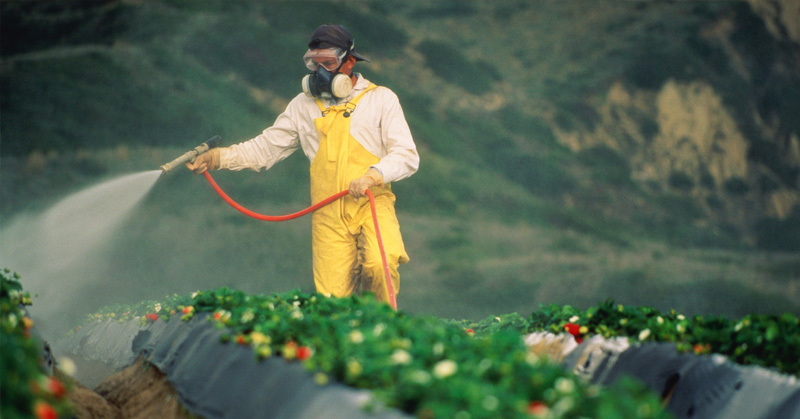Pesticides are everywhere. According to the EWG, The U.S. Department of Agriculture’s tests have found widespread pesticide contamination on popular fruits and vegetables. At least one pesticide was found on nearly three-quarters of the samples analyzed by the US Department of Agriculture in 2014, the most recent year tested. Pesticides can lower the intellectual availabilities of developing minds.
RELATED ARTICLE:
Even if your produce looks fresh, clean, and healthy, it can still have most of the toxic pesticides used to protect crop growth. This is why I’ve always advocated purchasing organic alternatives to any food.
The top offenders for heavy pesticide residue are potatoes, strawberries, apples, snap peas, grapes, celery, spinach, sweet bell peppers, cherry tomatoes, and nectarines.
RELATED ARTICLES:
- Which Produce Has the Most Pesticides? Here are the 14 Foods You MUST Buy Organic
- The organic industry is breaking growth records in 2016
Nectarines are particularly worrisome because 99% of the sampled group show at least one pesticide residue.
On a positive note, there are also fruits and vegetables that rank low on pesticide residue presence. Chief amongst them are avocadoes, scoring a wonderful 1% of detection in its sample group, proving once again that avocados are amazing for your health.
The cleanest produce you can find are kiwis, eggplants, onions, sweet corn, pineapples, yams, mangoes, cabbage, and papayas. You can enjoy these with relative ease.
But say you’re craving a juicy Fuji apple, what can you do?
Most supermarkets can offer you a variety of vegetable cleaners. However, you can always make your own vegetable cleaner. It’s super simple to make and it only requires one common household ingredient: white vinegar.
I personally like knowing every little detail of what goes into my produce, so I normally opt for using my homemade cleaner.
Homemade Vegetable Cleaner
My vegetable cleaner recipe is simple: it’s 90% water and 10% white vinegar. I’d recommend mixing it in a large basin so you have enough room to properly soak your fruits and vegetables.
Simply let your produce sit in the mix for approximately twenty minutes. After enough time lapses, rinse your produce with fresh cold water.
If you have any fragile fruits like blueberries, I’d recommend not leaving them in the mix for the full twenty minutes. Blueberries are known to have porous skin and the homemade vinegar mix can overwhelm their natural taste.
If you do find a remaining vinegar smell on your fruits and vegetables, you can always use lemon water to help eliminate the stench.
After you finish, you’ll notice a strange gunky residue at the bottom of your basin. As you may have guessed, that is pesticide residue that was hiding in your produce.
Say you’re particularly against using vinegar because of its smell. Worry not, you’re in luck because there is an alternative. According to the Center for Science and the Environment, you also can use 2% salt water to eliminate pesticides from your produce.
Using these methods, you’re likely to reduce the pesticide residue by 70%. There will always some residue hiding in the folds and crevices that are too hard to wash manually.
Taking your time to prepare and clean your food has enormous health benefits for your family. Each step, be it incorporating organic produce to eliminating pesticides, gradually brings you closer to achieving the necessary nutrition to keep your body at optimal performance.
*Article originally appeared at Healthy Holistic Living.












